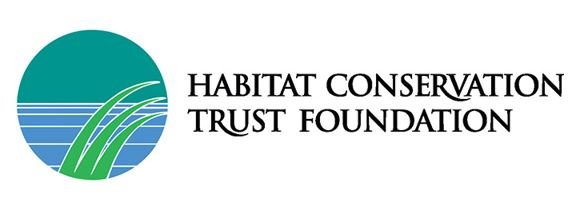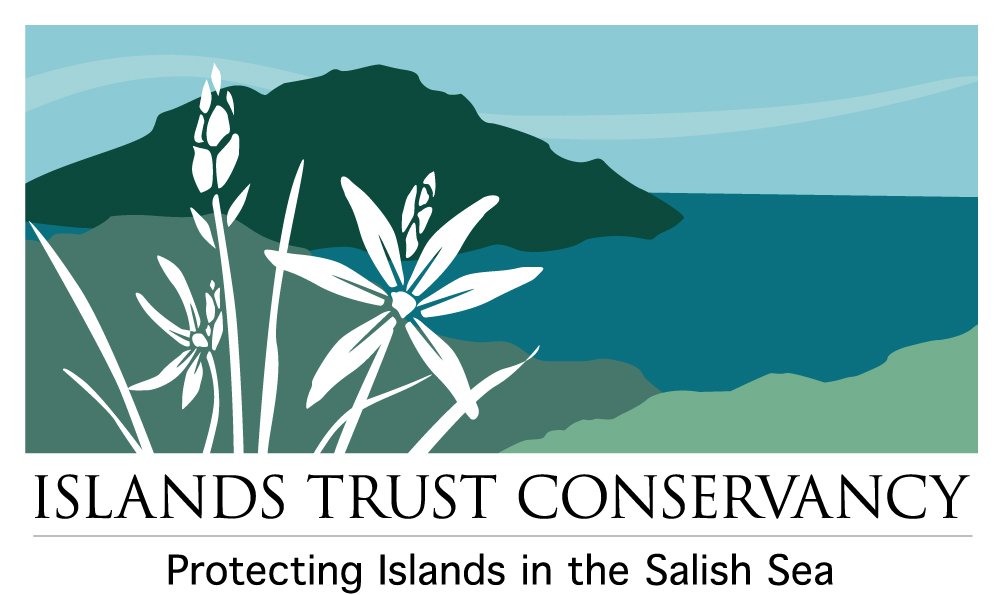Searching for Wex̱és (frogs) on Cha7élkwnech/Gambier Island
Coastal Tailed Frog (Ascaphus truei) Tadpole on Gambier Island. Credit: Sam Wing.
Identifying the distribution of species at-risk is a key step in ensuring the species’ protection. Presence and distribution data indicate habitat that needs protecting, as well as direct monitoring efforts for populations. In our mission to strengthen collaboration in Átl'ḵa7tsem / Howe Sound, we are collaborating with the Islands Trust Conservancy, the Gambier Island Conservancy and the Sḵwx̱wú7mesh Úxwumixw to fund a scientific research project to sample creeks for eDNA within seven watersheds on Gambier Island to determine the presence of the Coastal Tailed Frog.
Gambier is the largest island in Howe Sound, spanning roughly 69 square kilometres of a highly complex landscape. At least ten watersheds lead to the ocean in all directions. Riparian areas and wetlands support at least five amphibian species and have probably remained isolated from the mainland for approximately 10,000 years (i). These freshwater ecosystems are home to a massive diversity of species, which provide extensive ecosystem services (ii).
Remarkably, Gambier Island retains a large interconnected mosaic of highly productive, old and mature forest, an ecological asset increasingly rare in south coastal BC. Sustaining contiguous habitat complexity is essential for ecosystem resilience that sustains a rich diversity of old forest-dependent species (iii). Large contiguous areas of complex old forest are increasingly rare on the Southern Gulf Islands and threats from habitat loss and fragmentation have already caused extinctions of unique and irreplaceable components of biodiversity in these geographically isolated landscapes (iv). Because of the rarity of this type of ecosystem in the region, Gambier Island is home to many species at risk of extinction (v). Most of these species are threatened by disturbances due to the extent of human settlements and the rapid rate of forest harvesting in south coastal BC.
Juvenile Male Coastal Tailed Frog Gambier Island. Credit: Sam Wing.
Amphibian species' existence is threatened due to human activities in these freshwater systems, as streams are critical to amphibian survival for at least one life stage. Amphibians are extremely vulnerable to disruption, with population declines happening more rapidly than for birds or mammals; an estimated 70% of amphibian species are experiencing population declines (vi). At-risk amphibians reported to have been found on the island include the Coastal Tailed Frog and the Red-Legged Frog.
The Coastal Tailed Frog has been observed in streams on Gambier (vii). The Coastal Tailed Frog and Northern Red-Legged Frog are listed as a Special Concern by SARA, but no records exist in the BC Government Conservation Data Centre (2020). Coastal Tailed Frogs are rare on islands (viii), and the geographically isolated Gambier Island population is probably unique from surrounding mainland populations. We risk losing a significant component of biological diversity before it is formally recognized.
The results of this project will provide a better understanding of the presence and distribution of the Coastal Tailed Frog on Gambier Island through the analysis of eDNA testing. This knowledge will help inform the Islands Trust Conservancy and Howe Sound Biosphere Region Initiatives Society’s conservation planning and can also inform forestry operations on potential areas where damage to critical Coastal Tailed Frog habitat has occurred or could occur in the future.
This research is beginning to inform the conservation status for CTF and has the potential to expand the known species range in BC.
What was found?
Stream distribution on Gambier Island. Distribution of CTF eDNA sampling among nine first order streams sampled in 2021 and 2022. Green dots: CTF eDNA detected; Red Dots: CTF eDNA NOT detected; Yellow Dots: CTF eDNA marginally detected
This project commenced during the summer of 2022. Sampling of all seven major watersheds took place with 34 sample sites and 37 samples collected. Squamish Nation ACE Technicians participated in the sampling. A full report of the field operation was provided at the end of November, and samples collected during the summer were sent for analysis to UNBC in early 2023. Searching for Wex̱és (frogs) on Cha7élkwnech/Gambier Island – Field Summary Report 2023. Results from phase 1 indicate that coastal tailed frogs are present in at least five streams within the study area.
April 2024 - After successfully applying for a provincial sampling permit, sampling for Coastal Tailed Frogs continued on Gambier Island. The field personnel visited 19 sites and employed a 15-minute time-constrained survey to determine the abundance of this species among the five streams identified in Phase 1. A total of 26 tadpoles, one juvenile and one adult were found in four of the five streams. Presence of natal areas (where tadpoles can be found) was identified among three streams, but was not found in Andy’s Bay Creek. See the final report Chá7elkwnech (Gambier Island) Coastal Tailed Frog: the distribution of eDNA and natal areas among streams: Final Report Spring 2024.
A grant application to fund more sampling in 2024 was submitted to the Habitat Conservation Trust Foundation by Stamford Environmental in November of 2023. Unfortunately, this application for the 2024 funding round was unsuccessful.
September 2025 - sampling has resumed through the Gambier Island Conservancy, with funding from Islands Trust Conservancy.
Resources & Other Materials:
COSEWIC Assessment and Status Report on the Coastal Tailed Frog
i - Friele & Clague, 2002, ii - Meidinger & Pojar, 1991, iii - e.g. Doyle and Yadao 1999; Gayton and Almuedo 2012; Oliver et al. 2015. iv - Harding and McCallum 1994; Cannings and Cannings 1996, v - BC Conservation Data Center, 2020, vi - Abney et al., 2019, vii - e.g. Doyle and Yadao 1999, viii - Environment and Climate Change 2016
For more information, contact the Project Team:
Sam Wing, OECM Projects Manager, OECMProjects@howesoundbri.org and Mike Stamford - Stamford Environmental Contact: stamford@telus.net
Funding Partners:






